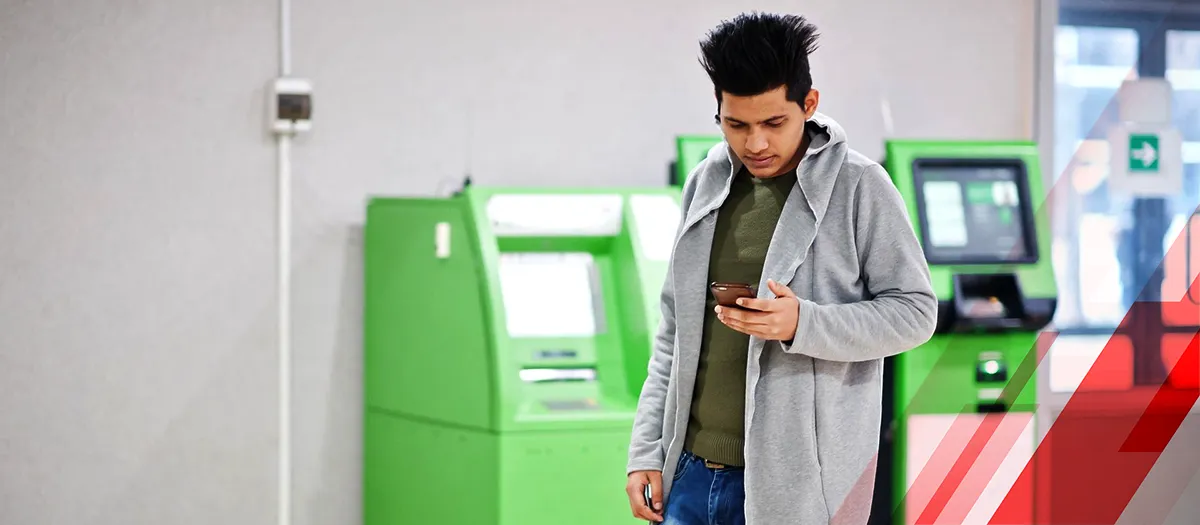Ever wondered about a banking experience that transcends traditional brick-and-mortar branches, allowing you to access financial services with a touch of innovation and convenience? Enter the world of bank kiosks, where cutting-edge technology meets financial accessibility.
In an era where our lives are becoming increasingly fast-paced, these unassuming kiosks are quietly revolutionizing the way we interact with banking services. From facilitating quick transactions to providing foreign exchange solutions, these kiosks are the unsung heroes of modern banking convenience. Let’s take a quick look at this amazing service in the world of banking.
What is a Bank Kiosk?
A bank kiosk is a convenient self-service banking solution that enables customers to carry out a range of banking activities. These include depositing and withdrawing money, transferring funds, paying bills, and updating account details, all without having to visit a physical bank branch. These kiosks are usually installed in areas with limited access to traditional bank branches, giving individuals in remote locations or underserved areas the opportunity to access essential banking services.
Bank kiosks provide a range of services, including opening and monitoring accounts, making cash deposits and withdrawals, transferring money to other branches, clearing checks, recording passbook entries, issuing checkbooks, offering loan facilities, generating printed statements, and more.
These kiosks play a vital role in promoting financial inclusion, particularly in rural and remote areas. They are set up to offer banking services to individuals who face challenges in accessing conventional banking facilities. These kiosks aim to bridge the gap and provide much-needed banking services to underserved communities. As per Kings Research’s estimations, the global bank kiosk market is slated to generate revenue of $2428.2 million by 2030.
How Does Kiosk Banking Work?
Financial inclusion through bank kiosks plays a vital role in ensuring economic stability for all residents, regardless of their background or location. This approach becomes particularly valuable when individuals cannot physically visit a bank due to the absence of nearby branches. In such cases, the bank brings its services directly to the region, enabling transactions, extending credit, and providing access to a range of financial services for low-income groups. The accessibility and convenience offered by kiosk banking contribute to the overall well-being and financial security of individuals across the country.
Bank kiosks, which are small booths equipped with internet access and staffed by personnel to aid customers in utilizing fundamental banking services, have been established all over India. Numerous prominent banks, both private and public, as well as cooperative banks, have introduced these kiosks to cater to their customers. These kiosks commonly provide services such as cash withdrawals, deposits, and money transfers.
The kiosks act as a communication channel connecting the public with the banks. Usually, any requests made at a kiosk are forwarded to the nearest branch for handling, such as requests for opening a bank account or making a deposit.
In the realm of banking convenience, the landscape is witnessing notable expansions, with renowned foreign exchange brand Travelex making substantial investments. Their commitment extends to over 75 new locations, encompassing bureaux, kiosks, and ATMs across various countries. These bank kiosks represent a pivotal aspect of Travelex's strategy, providing accessible and efficient financial services to customers in diverse locations. As technology continues to shape the banking experience, these kiosks stand as a testament to the industry's dedication to enhancing accessibility and meeting the evolving needs of customers globally.
Benefits of Bank Kiosk
ATMs and banking kiosks offer advantages not only to customers but also to the organizations that utilize them. This encompasses:
- Reduced overheads: Kiosks are automated devices that operate without the need for human assistance. The advantage of self-service is that it reduces the cost associated with employing staff to manage the kiosks. This not only cuts down on overhead expenses for businesses but also eliminates the need for attendants to operate the kiosk.
- Multiple capabilities: Kiosk software can perform various simple tasks, thereby reducing the congestion in banks. Rather than dealing with money transfers or deposits, tellers can now dedicate their attention to more intricate responsibilities that demand human assistance.
- Contactless transactions: Kiosks offer a contactless approach to conducting business while maintaining full functionality and productivity.
- Consistent customer experience: The level of customer satisfaction can greatly differ when dealing with employees of traditional banks. Conversely, kiosks offer a consistent and generally pleasant customer experience, thereby contributing to high levels of customer satisfaction.
- 24/7 availability: Most kiosks operate round the clock, ensuring availability at any time of the day. This feature proves particularly beneficial for individuals with work schedules that clash with traditional banking hours.
- Live help: As banking kiosks are a form of digital technology, they can be connected with software that enables users to directly communicate and engage with live tellers for personalized support. While this technology is not yet widely accessible, its presence is gradually increasing in various locations.
Services Offered by Bank Kiosks
Banking kiosks offer a range of features and functionalities, which may vary depending on their brand and type.
Self-service retail banking kiosks have the potential to bring about notable enhancements to physical branch locations, as indicated by a study conducted by Source Technologies. Essentially, a banking kiosk serves as a tangible point of contact where customers can conveniently perform a wide range of in-person tasks. These encompass various activities typically carried out within a physical branch setting.
- Making cash and check deposits
- Establishing new accounts
- Generating account statements
- Transferring funds
- Managing accounts, such as applying for overdrafts
- Certain banking kiosks are equipped with software that enables users to connect with live support for additional assistance or consultation. These kiosks may utilize video or audio features to ensure a smooth and seamless experience.
Differences Between a Bank Kiosk and an ATM
Here are the major differences between bank kiosks and ATMs:
- Account-related inquiries, including checkbook requests, can be addressed at kiosks rather than ATMs.
- Customers have the option to utilize customer service tools at kiosks, enabling direct connection to the bank's help desk.
- MIS reporting is available through kiosks, but not through ATMs.
- Kiosks empower users to engage in online transactions by providing access to Internet banking features.
To Wrap it Up
The advent of bank kiosks has undeniably transformed the landscape of customer service and banking convenience. These self-service hubs not only cater to a spectrum of account-related needs but also bridge the gap between customers and efficient, technology-driven solutions. From facilitating transactions to offering access to vital customer service tools, these kiosks have become integral in enhancing the overall banking experience. As financial institutions continue to embrace innovation, the evolution and widespread adoption of bank kiosks are poised to play a pivotal role in shaping the future of customer interactions within the banking sector.




